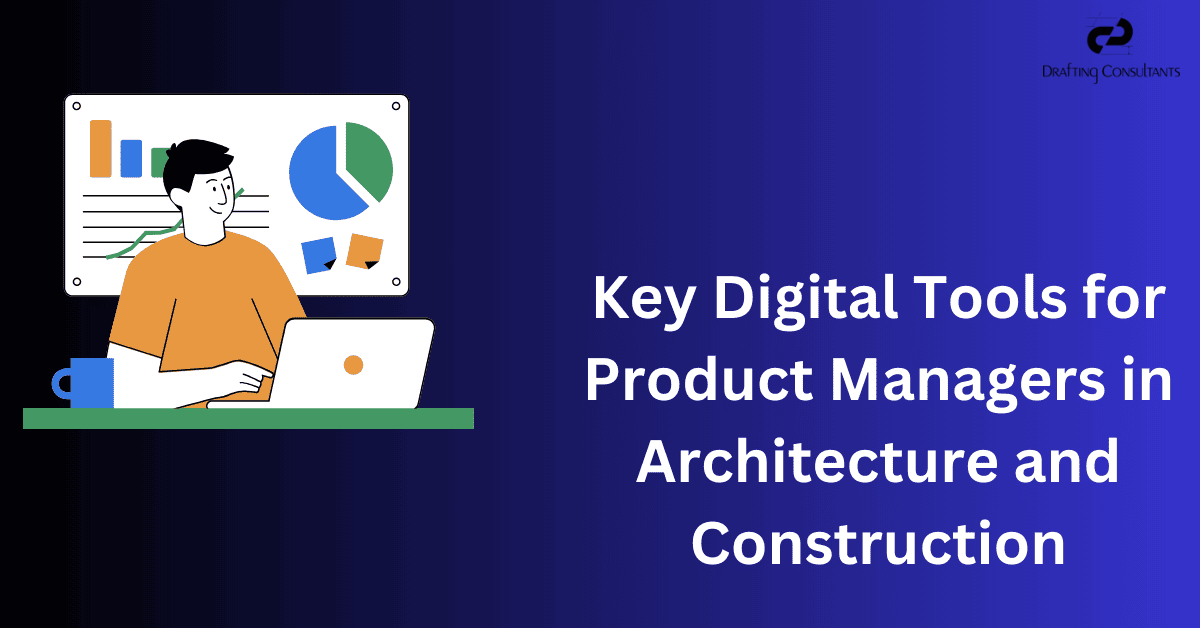Product managers guarantee design and construction projects run smoothly, fulfil client needs, and are completed on schedule and under budget. To achieve these aims, product managers must employ digital technologies for project management, process optimization, and communication. Here are some top digital tools for building and architectural product managers.
Building Information Modelling (BIM) Software
BIM is transforming architecture and construction. BIM software provides a digital duplicate of a building's appearance and functionality. As the project goes from the original design to construction and maintenance, it helps product managers see the whole picture.
Key Benefits:
- Visualization and Simulation: BIM enables you to create accurate 3D models to visualize complex plans and spot issues early.
- Collaboration: BIM improves collaboration between architects, engineers, and constructors by sharing models and data.
- Clash Detection: This feature helps save costly repairs by detecting and fixing issues between building systems before installation.
Project Management Software
Project management software speeds up planning, execution, and completion. Construction and architectural product managers need these technologies to manage work, resources, and deadlines.
Key Benefits:
- Task Management: Assign tasks, create deadlines, and track progress to meet project milestones.
- Resource Allocation: Avoid over-allocating or becoming trapped by using resources wisely.
- Budget Tracking: Control project expenses and budgets to avoid overruns.
Computer-Aided Design (CAD) Software
Complex engineering and architecture designs require CAD software or 3D CAD Services. This software lets product managers review design plans, make changes as needed, and improve them.
Key Benefits:
- Precision: CAD gives precise control over sizes and details, so your plan will be correct.
- Efficiency: Uses reusable templates and parts to speed up planning.
- Integration: Many CAD tools work with other programs, like BIM and project management tools, to easily share data.
Collaboration Platforms
Teams working on building and construction projects often have to communicate and work together well, even in different places and time zones. Collaboration tools make sharing documents and talking to each other in real-time easier.
Key Benefits:
- Real-Time Communication: Real-time communication lets people stay in touch through instant chat, videoconferencing, and file sharing.
- Document Management: This feature stores all project papers in one place, making it easier to find, read, and change data.
- Version Control: Keeps track of changes and handles different versions of files to keep things clear.
Construction Management Software
Product managers can handle different parts of building projects with the help of construction management software. This software helps with things like budgeting, scheduling, and managing contracts.
Key Benefits:
- Scheduling: Create and track project schedules, handle deadlines, and change plans as needed.
- Contract Management: Take care of contracts, keep track of changes, and ensure that responsibilities are met.
- Reporting: Make detailed reports on the status of the project, its finances, and its success metrics.
Geographic Information Systems (GIS)
Geographic information systems (GIS) analyze geographical data. They can be used to analyze sites, make plans, and check for environmental impacts in the building and architecture industries.
Key Benefits:
- Site Analysis: Look at topography, climate, and infrastructure to see if a place fits your needs.
- Planning: Using spatial data in planning processes to get the best form and placement.
- Impact Assessments: Check the consequences on people and the environment to follow the rules and meet sustainability goals.
Virtual Reality (VR) and Augmented Reality (AR)
AR and VR improve design reviews, and the client shows by making experiences more immersive. Product managers and clients can use these tools to see projects more dynamically and interestingly.
Key Benefits:
- Immersive Visualization: Virtual reality lets people experience ideas as if they were there, which helps them understand how things fit together and how they look.
- Interactive Reviews: AR can add digital information on top of the natural world, which makes on-site reviews and design changes more manageable.
- Client Engagement: Make presentations more exciting and interactive for clients, making it easier for them to talk to and support you.
Asset Management Software
Asset management software makes tracking and managing physical assets easier throughout their life. For product managers, this means managing tools, materials, and other resources used in building.
Key Benefits:
- Inventory management: Track materials and tools to ensure they are available and used best.
- Maintenance Tracking: Plan and keep track of maintenance tasks to make assets last longer and have less downtime.
- Cost Management: Keep an eye on the prices of buying, maintaining, and getting rid of assets.
Document Management Systems (DMS)
A DMS must organize, store, and manage project documents, including plans, specs, contracts, and letters.
Key Benefits:
- Centralized Storage: All project papers are kept in one place, which makes them easy to find and organize.
- Security: Uses access limits and encryption to keep private data safe.
- Compliance: Keeping accurate and complete records helps follow the rules and standards the government and the business sets.
Data Analytics and Reporting Tools
Product managers can use project data to make intelligent choices with the help of data analytics and reporting tools. These tools give you information about efficiency, trends, and possible problems.
Key Benefits:
- Performance Metrics: Check KPIs to see how well the project is going and where it can improve.
- Trend Analysis: Predict future patterns and make changes using prior data.
- Custom Reports: Make customized reports to inform stakeholders about a project's state and results.
Conclusion
Architectural Cad Drawings and construction work is fast-paced and complicated. Product managers need the correct digital tools for efficiency, teamwork, and project success. These tools, including BIM and CAD software, VR/AR technologies, and data analytics, are helpful at all project stages. By using these digital tools, product managers can ensure that processes run more smoothly, decisions are made better, and projects are finished more successfully.
